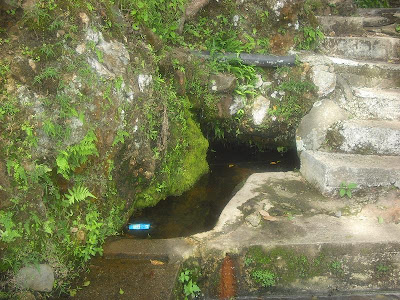Let’s have a breather to deviate and ease our COVID-19 saturated minds from this mayhem.
What do Igorots have in store for this chaotic situation we are in?
It is the reassurance that everything will be all right, and this perplexing situation will get better for all of us tomorrow. "Kasiyana sa."
I find it hard how to express myself while thinking of how many of us also feel about the havoc this pandemic has brought to this world. But let me tell you, "Kasiyana sa", this too shall pass just like what everybody is wishing and things will soon be back to normal. This is no easy feat but I'm sure with resilience and discipline inherent amongst us, we will pull through and get over this difficult situation.
To the Igorots, if there is “Inayan sa,” to forbid misconducts and wrongdoings to avoid bad karma; in times of uncertainties like what we are all experiencing today - the
COVID_19, there are also reassuring words to uplift the spirit of those who despair and are losing hope.
I’m sure the Igorots are saying, “Kasiyana sa.” and "Laton sa."
Yes, me too. I want to remain adamant and be positive about what will happen because I strongly believe that all these will soon pass and tomorrow will be a better day for all of us. “Kasiyana sa.”
“Kasiyana sa,” is a Kankanaey word that gives assurance in times of uncertainty and hopelessness. It was what our ancestors have passed to the next generations. That in times like this pandemic, people should keep calm and be strong because “Kabunian”, the Igorot God, is always there to stand by them no matter what difficulties they are going through.
I remember my parents a long time ago, they always eased our bad feelings with the short sentence, “Kasiyana sa.” In difficult times; like when we were sick, when there was a problem, when we were almost losing hope, and when someone is having a hard time with something else, their word of reassurance kept our spirits up.
My father used to tell us how they had survived World War II without experiencing extreme hunger. Some thought it was already the end of the world, and those who thought of the end of the world were the same people who stopped working on the fields because they thought they were only wasting their time toiling the land if the world would end, anyway. When the war finally ended, it was those who continued working amidst the war who didn’t go hungry. Those who stopped working on the fields to plant crops for sustenance experienced extreme hunger after the war.
It's the same reason our father always advised us to keep going, no matter the situation. Because everything, no matter how difficult and hopeless it may seem, will have an end.
My father would often tell us, “Kasiyana sa.” Everything will be fine. Things will soon get better. And it provided us with the hope and comfort we needed, which gave us the strength to face the difficulties.
There’s another uplifting word of the Igorots. They say, “Laton sa,” to mean the positive result of something.
They say, “Laton sa,” to mean everything is fine and good.
During this time when COVID-19 is creating stress, depression, difficulties, and doubts in our minds, we say “Kasiyana sa.” or “Laton sa.”
Let’s think of the positive things this pandemic has done to us. It wasn’t all that negative; we learned how to be more prepared for this kind of problem.
In the end, we will have something to thank COVID-19 because we learned a lot of lessons we have missed in normal situations.
I'll end this with, "Kasiyana sa."
Copyright 2020













